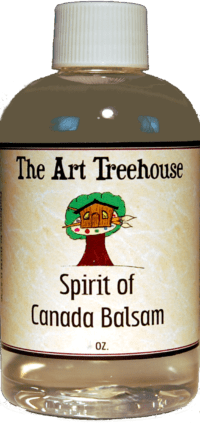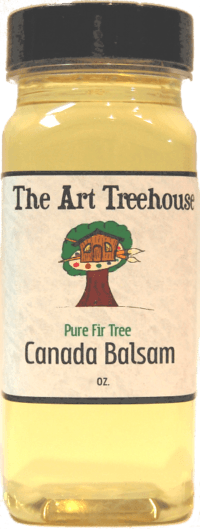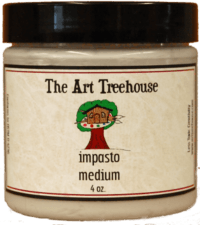Description
William F. Martin is well known and highly regarded in the wider artist’s community, and has been a source of information and assistance to painters for decades. Many artists follow Bill’s recipe for making this great medium, purchasing the separate ingredients and mixing by hand. However, after multiple requests, and in dialogue with Bill we decided to offer the medium at The Art Treehouse – ready to use right out of the bottle! (This oil is only available in the continental US and Canada, because it must be shipped ground.)
Here is Bill’s discussion of the medium…..
For many years I struggled as a traditional oil painter, trying nearly all the commercially available painting mediums that were available from art supply stores in my area. I always seemed to be having to invent ways to make them perform in such a way that would allow me to create the effects that I wanted. In short, I always seemed to be doing battle with my medium.
I wanted a painting medium that would make my paint “behave” well, causing it to flow properly, without tacking up on my palette during my painting session, and remaining workable, and “open” during an entire painting session, or even longer, as well as being durable, once it had been applied to the canvas, and was dry.
I always knew that Linseed Oil, and mediums made with it were rather sound, from a durability standpoint, and from a handling standpoint, but at times I felt that I required a bit more, in terms of the characteristic of an oil paint medium.
Throughout my years as an oil painter, I was constantly attempting to achieve just the right painting medium, that would perform exactly as I wanted it to perform, remain open on my palette, and exhibiting a high degree of durability, once it had been applied to the canvas.
The medium upon which I finally settled is the best medium I’ve used, and I am pleased to share the ingredients, and characteristics with other oil painters.
My medium consists of 4 separate, traditional ingredients, each having its own purpose. Following, is list of my 4 ingredients, with their unique characteristics explained.
1). Water-Washed Linseed Oil:
Water-Washed oil is more pure, because much of its impurities have been removed by the water-washing process. Linseed Oil creates the most durable, tough, paint film, while being a rather rapid drying oil. Water-washing makes it even a slight bit faster drying.
2). Water-Washed Walnut Oil:
Again, the water-washed oil is more pure than the unwashed version. Walnut oil is a bit less yellowing than Linseed Oil. Walnut Oil also adds a bit of a “slippery” characteristic to the medium, allowing the paint to flow in a rather unique manner, which is quite appropriate for layering, and glazing. It is a bit slower drying than Linseed Oil.
3). Canada Balsam:
This natural resin serves one primary purpose in my medium—to prevent beading upon the surface of the dried underpainting of the medium, or the paint with which it is mixed, and to promote a better bond of the fresh paint with the surface of the dried, underpainting. It exhibits a very pleasant, clean smell.
4). Oil of Spike Lavender:
This is a solvent that is more aggressive in its solvent action than either Odorless Mineral Spirits, or Distilled Spirits of Gum Turpentine. This allows the medium to “bite into” the surface of the dried, oil underpainting, thus promoting an improved bond between the dried surface, and the fresh oil paint. It too, imparts a slippery feel to the medium, as does the Walnut Oil, making it quite wonderful for layering, and glazing. It is a bit slower drying than Odorless Mineral Spirits, and MUCH slower drying than Turpentine, allowing the artist to perform many operations that could not be performed by many of the commercial painting mediums. This solvent emits a very pleasant odor of Lavender, and, when combined with the fresh, piney scent of the Canada Balsam, creates a medium that is not only useful, and pleasant to use, but one that is also a bit artistically inspiring.
Suggested uses:
I use this medium in two ways: I either mix a small bit of it with my paint on the palette, using my brush to dip a bit out of the medium cup, and then combining with my paint in small amounts for each brush stroke, using the brush to mix it. Since each brush stroke may require a different viscosity, I recommend that you avoid mixing large amounts of medium with the individual paint nuts on the palette, because that may cause it to be of one, standard, viscosity, which may not be appropriate for all effects. I mix it with the paint as I need it.
I also use my medium as a “couch” for my paint, for my glazing process. I apply a small amount to my dried, painted surface, and spread it out (usually with my fingertip) until it can barely be detected. Only a slight sheen will be apparent in the treated areas. Then, I apply full-bodied paint into this “couch” of medium, allowing the medium to act as a lubricant for the paint, rather than as a “thinner”, or “diluent” for the paint. I spread the paint out very thinly, thus creating a glaze layer that is not only appealing, but archival sound. I work on small, controllable areas at a time, of perhaps 6” by 6” dimensions.
Enjoy my painting medium.
William F. Martin (Bill)





